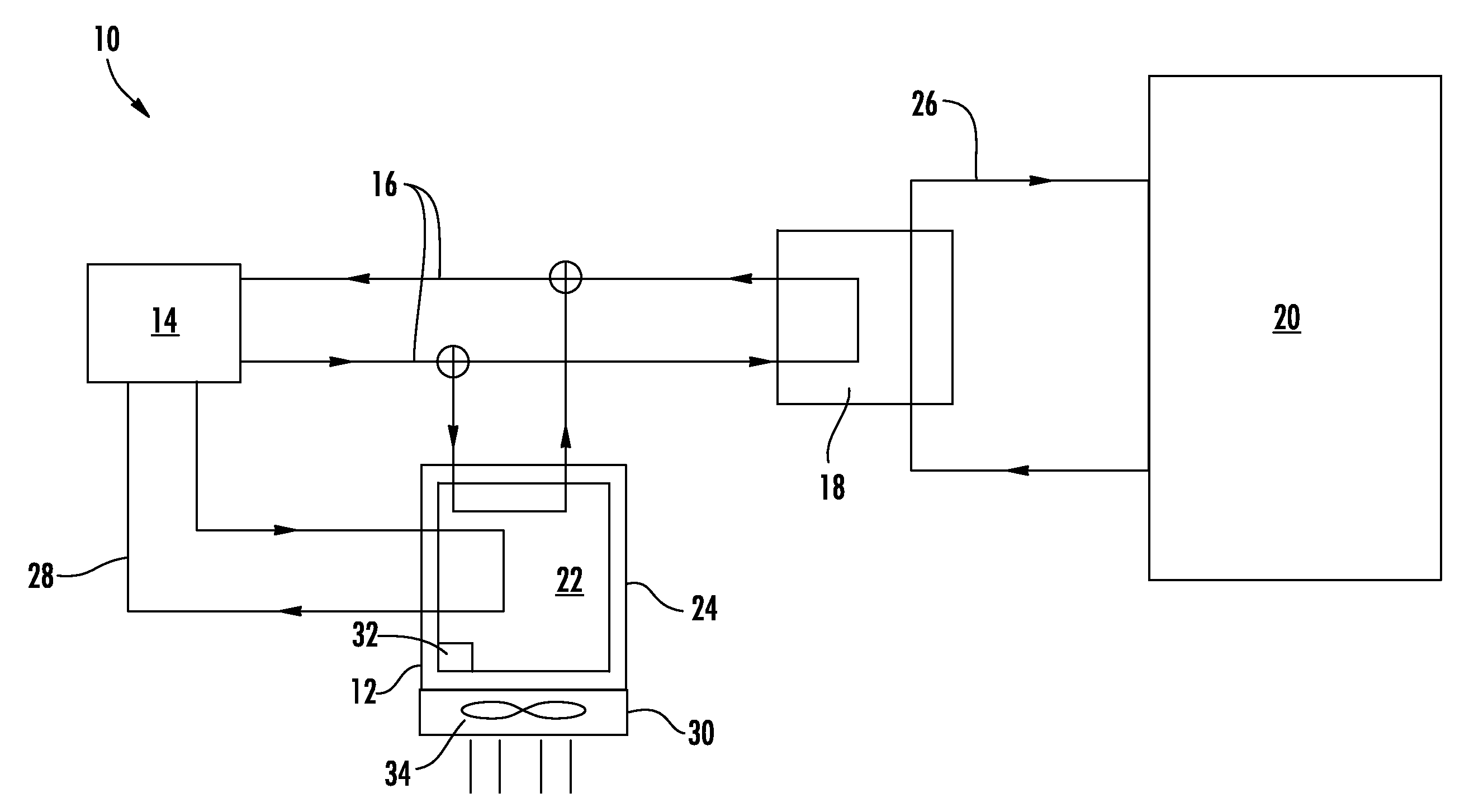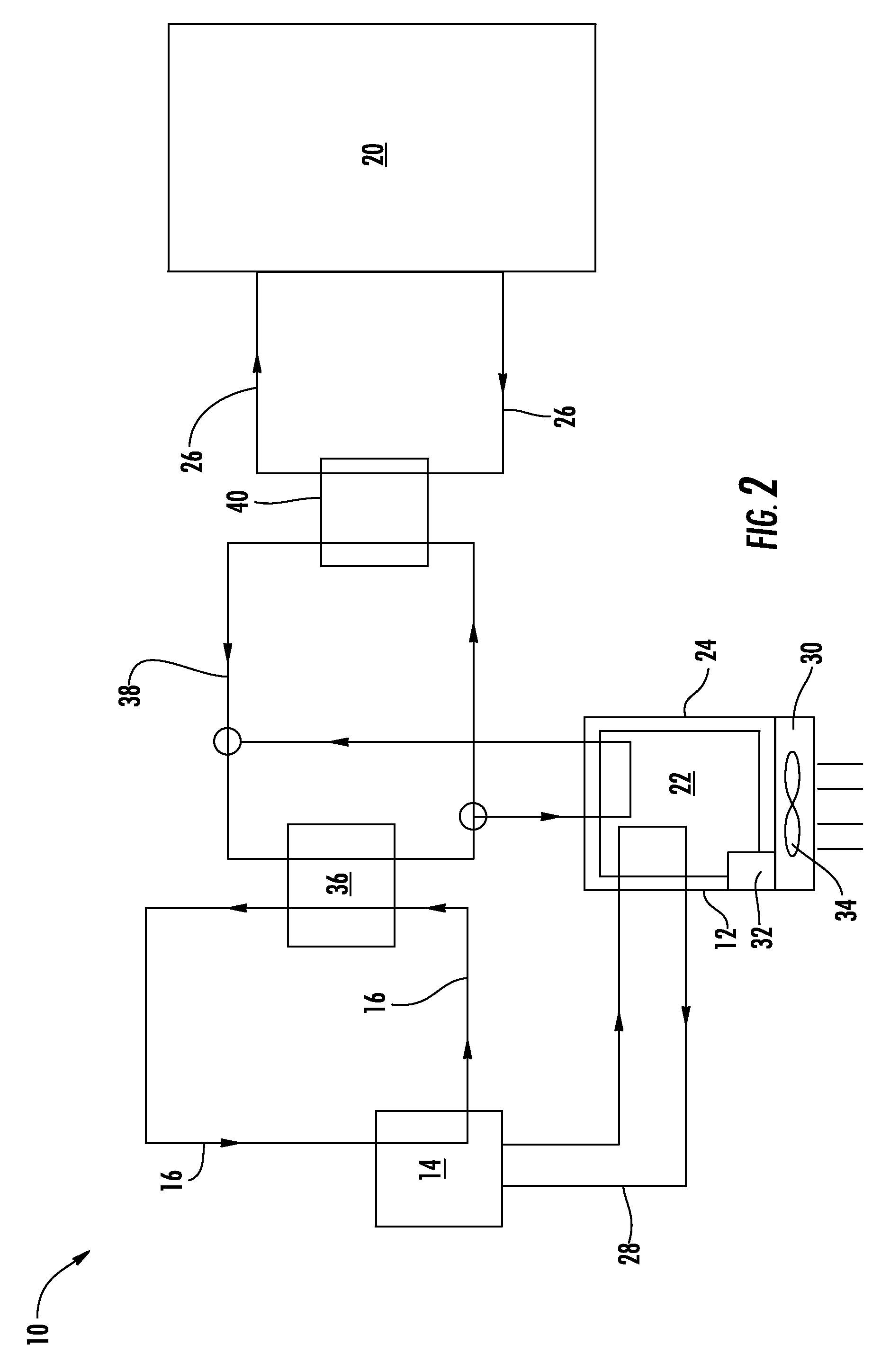Thermal energy storage in a chiller system
a chiller and energy storage technology, applied in the field of air conditioning systems, can solve the problem of inefficient use of the same chiller system
- Summary
- Abstract
- Description
- Claims
- Application Information
AI Technical Summary
Benefits of technology
Problems solved by technology
Method used
Image
Examples
Embodiment Construction
[0012]Shown in FIG. 1 is a schematic of an embodiment of an improved air conditioning system 10 including a thermal energy storage (TES) unit 12. The system 10 illustrated in FIG. 1 is a direct-exchange (DX) system 10. The TES unit 12 is connected to a refrigeration unit, for example, a chiller 14 via one or more refrigerant pathways 16 in which a refrigerant is circulated between the chiller 14 and the TES unit 12. The TES unit 12 is further connected to an evaporator heat exchanger 18, which exchanges thermal energy between a building 20, or other serviced space, and the TES unit 12.
[0013]The TES unit 12 utilizes a volume of phase change material (PCM) 22 to store thermal energy in a storage tank 24. The PCM 22 may be an organic wax material having a transition temperature higher than a typical nighttime temperature, or over about 32 degrees Fahrenheit or zero degrees Celsius, and lower than the typical daytime ambient air. The higher transition temperature of the PCM 22, when com...
PUM
 Login to View More
Login to View More Abstract
Description
Claims
Application Information
 Login to View More
Login to View More - R&D
- Intellectual Property
- Life Sciences
- Materials
- Tech Scout
- Unparalleled Data Quality
- Higher Quality Content
- 60% Fewer Hallucinations
Browse by: Latest US Patents, China's latest patents, Technical Efficacy Thesaurus, Application Domain, Technology Topic, Popular Technical Reports.
© 2025 PatSnap. All rights reserved.Legal|Privacy policy|Modern Slavery Act Transparency Statement|Sitemap|About US| Contact US: help@patsnap.com



